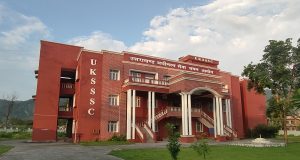The 45-foot-long whale carcass that washed ashore in two pieces at Juhu and Madh beaches on Sunday is the largest mammal to have reached Mumbai’s coastline, officials from the state mangrove cell said.
A day after the decomposed carcass washed ashore, the state mangrove cell confirmed that the whale was a Bryde’s whale that was 13.7 metres in length. The Bryde’s whale is the most common baleen whale found along the Indian coast. They can reach a maximum length of 15 metres. It is protected under schedule I of the Wildlife Protection Act, 1972.
State mangrove cell officials said the whale’s carcass was buried at Madh beach on Monday afternoon. “After measuring the exact length of the mammal and checking its species, we realised that this was the largest mammal in history to have washed ashore along Mumbai’s coastline. It is a very special documentation for the city. As per preliminary assessment, it is clear that the whale could have died of natural causes,” said Makarand Ghodke, assistant conservator of forest, state mangrove cell.
In January 2016, the carcass of a 40-foot-long male Bryde’s Whale had washed ashore at Juhu beach. While no Blue Whale carcasses have landed up at Mumbai’s beaches, two had washed ashore at Alibaug and Sindhudurg in 2015 and 2016 and one was rescued from Ratnagiri last year.
Researchers from the Konkan Cetacean Research Team (KCRT) said the whale was a sub-adult. “We collected tissue samples of the whale and it was a well-coordinated analysis with the mangrove cell. We can rule out the possibility of a ship strike cutting the whale into two because propeller marks on its body were missing. However, the exact cause of death is unknown,” said Mihir Sule, member, KCRT. “We also observed that the whale’s body was scavenged upon by sharks, which is a common phenomenon.”
 Dainik Nation News Portal
Dainik Nation News Portal




